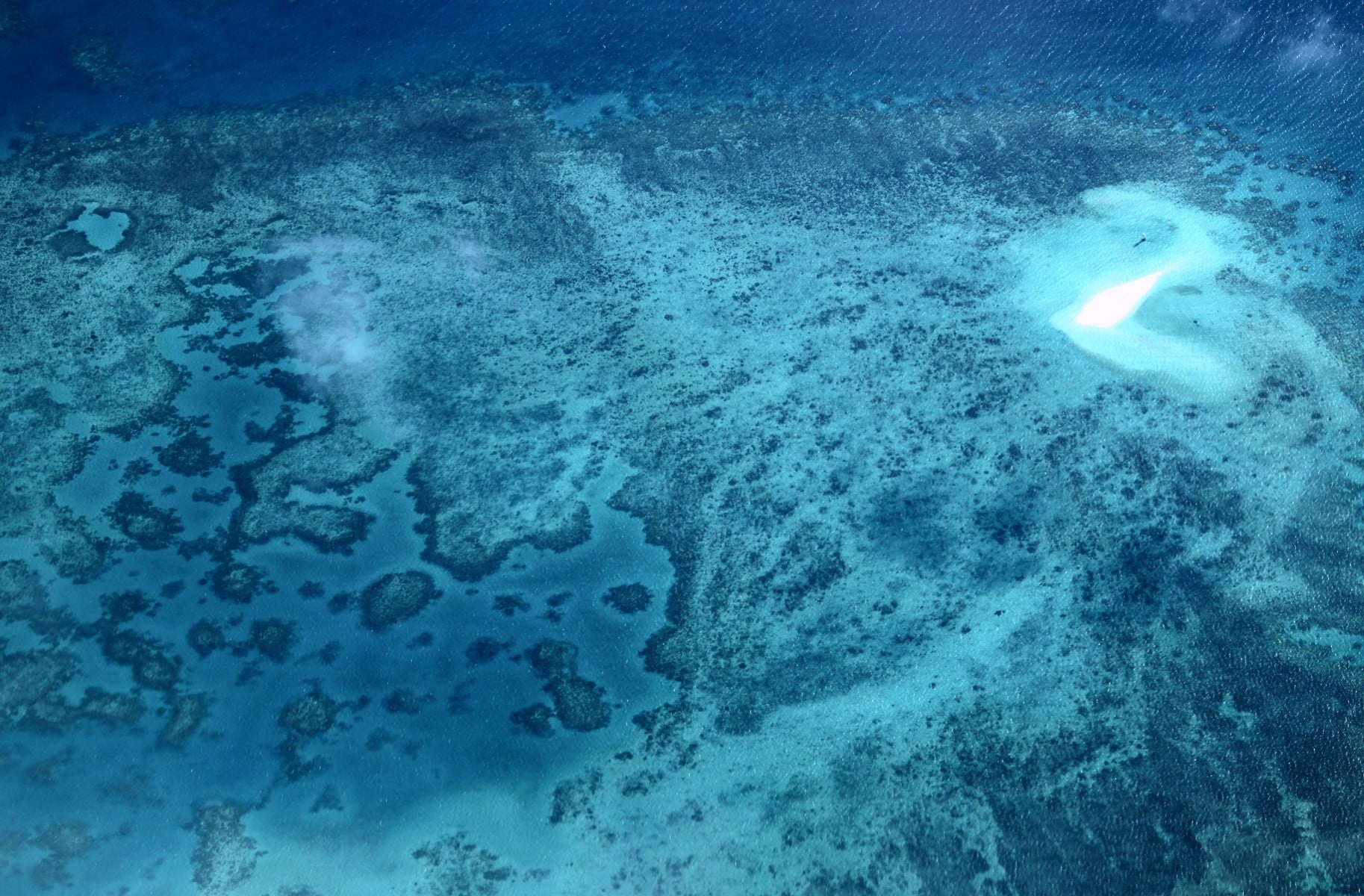Parts of Great Barrier Reef suffer highest coral mortality on record

This aerial photo taken on April 5, 2024, shows a coral atoll near Lizard Island on the Great Barrier Reef, located 270 kilometers (167 miles) north of the city of Cairns. FILE PHOTO/Agence France-Presse
SYDNEY — Parts of the Great Barrier Reef have suffered the highest coral mortality on record, Australian research showed Tuesday, with scientists fearing the rest of it has suffered a similar fate.
The Australian Institute of Marine Science said surveys of 12 reefs found up to 72 percent coral mortality, thanks to a summer of mass bleaching, two cyclones, and flooding.
In one northern section of the reef, about a third of hard coral had died, the “largest annual decline” in 39 years of government monitoring, the agency said.
READ: Australia’s Great Barrier Reef hit by record bleaching
Often dubbed the world’s largest living structure, the Great Barrier Reef is a 2,300 kilometer (1,400-mile) expanse of tropical corals that house a stunning array of biodiversity.
But repeated mass bleaching events have threatened to rob the tourist drawcard of its wonder, turning banks of once-vibrant corals into a sickly shade of white.
Bleaching occurs when water temperatures rise and the coral expels microscopic algae, known as zooxanthellae, to survive.
If high temperatures persist, the coral can eventually turn white and die.
READ: Scientists say world’s largest coral found near Solomon Islands
This year had already been confirmed as the fifth mass bleaching on the reef in the past eight years.
But this latest survey also found a rapid growing type of coral — known as acropora — had suffered the highest rate of death.
This coral is quick to grow, but one of the first to bleach.
‘Worst fears’
Lead researcher Mike Emslie told public broadcaster ABC the past summer was “one of the most severe events” across the Great Barrier Reef, with heat stress levels surpassing previous events.
“These are serious impacts. These are serious losses,” he said.
WWF-Australia’s head of oceans Richard Leck said the initial surveys confirmed his “worst fears”.
“The Great Barrier Reef can bounce back but there are limits to its resilience,” he said.
“It can’t get repeatedly hammered like this. We are fast approaching a tipping point.”
Leck added the area surveyed was “relatively small” and feared that when the full report was released next year “similar levels of mortality” would be observed.
He said that it reinforced Australia’s need to commit to stronger emission reduction targets of at least 90 percent below 2005 levels by 2035 and move away from fossil fuels.
The country is one of the world’s largest gas and coal exporters and has only recently set targets to become carbon neutral.